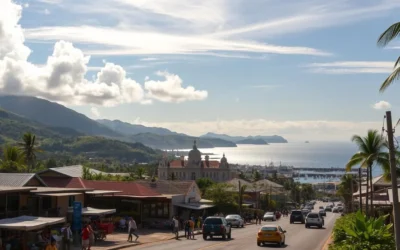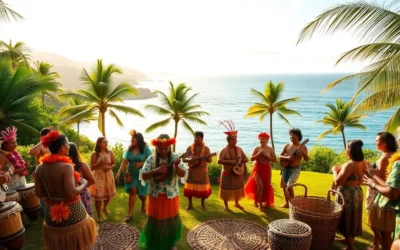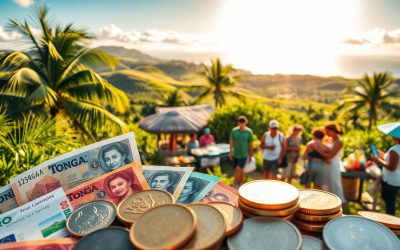✓ Accommodations✓ Flights✓ Rental Cars✓ Tours & Activities
Discover the unique linguistic landscape of this Polynesian island nation. Tonga is home to two primary languages: Tongan and English. These languages reflect the island’s rich cultural heritage and historical evolution over centuries.
Tongan, part of the Austronesian family, is deeply rooted in the island’s identity. It is spoken by approximately 200,000 native speakers, both locally and abroad. This language has retained unique features, such as a glottal stop and a definitive accent, setting it apart from other Polynesian languages.
English plays a significant role in education and business. It is introduced in schools starting from class four, creating a balanced bilingual environment by high school. This blend of languages showcases the island’s adaptability while preserving its traditions.
Overview of Tonga’s Linguistic Diversity
Explore the vibrant linguistic tapestry of this Polynesian nation. With a population that is 96.6% of native origin, the country’s demographic makeup fosters a unique blend of languages. This diversity is further enriched by the presence of various ethnic groups, creating a dynamic linguistic environment.
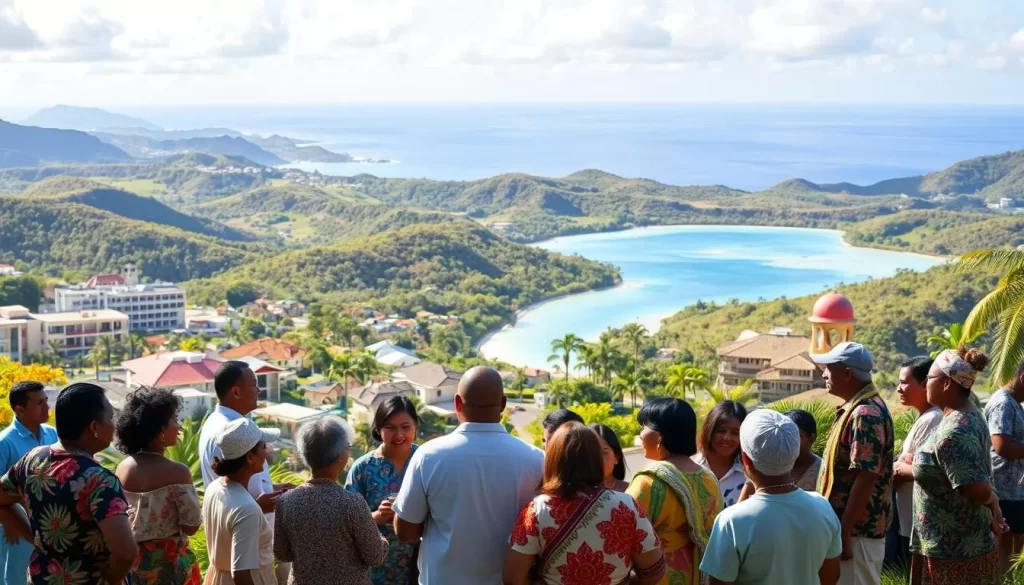
Demographics and Ethnic Background
The majority of the population identifies as native, which plays a significant role in shaping the linguistic landscape. Over the years, the introduction of other ethnic groups has added layers to this diversity. Media, including newspapers and digital outlets, helps bridge communication gaps and promotes multilingualism.
Education plays a crucial role in maintaining this balance. From primary to high school, students are exposed to multiple languages, ensuring they develop proficiency at every level. This approach not only preserves cultural heritage but also prepares the younger generation for a globalized world.
Linguistic Heritage in Polynesia
The linguistic heritage of this nation is deeply rooted in Polynesian traditions. Historical census data shows how language use has evolved over the years, adapting to modern needs while retaining its core identity. This evolution is a source of pride for the community, reflecting their resilience and adaptability.
Polynesian languages, including the native tongue, are celebrated for their unique features. From intricate honorifics to expressive registers, these languages offer a glimpse into the rich cultural fabric of the region. This heritage is not just preserved but actively promoted across different demographic groups.
Tonga: Official and widely spoken languages
Dive into the linguistic identity of this Pacific nation, where tradition meets modernity. Two languages, Tongan and English, play pivotal roles in shaping communication and culture. This blend reflects the nation’s rich heritage and adaptability over time.
Tongan Language Profile
The Tongan language, part of the Austronesian family, is a cornerstone of this nation’s identity. It uses a Latin-based script and is spoken by approximately 200,000 native speakers, both locally and abroad. Unique features like the glottal stop and a definitive accent set it apart from other Polynesian languages.
Geographically, the language has spread beyond its borders. Significant communities in New Zealand, Australia, and Canada keep the language alive. This diaspora ensures the Tongan language remains vibrant and relevant globally.
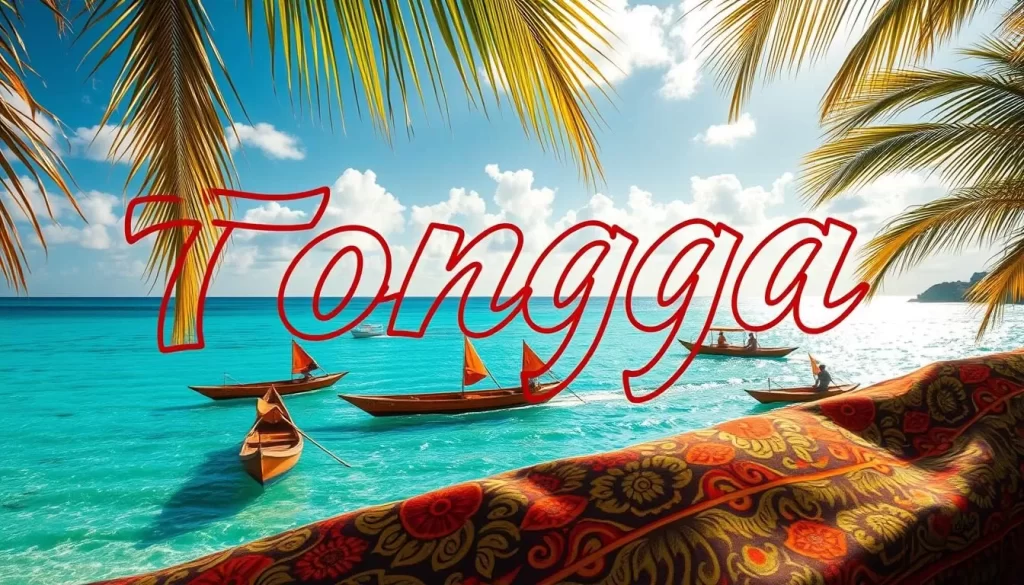
Historically, the language evolved as an official medium over time. Its current spelling system was established in 1943, and it includes 17 letters, each syllable ending in a vowel. These features make it both unique and accessible.
English in Tongan Society
English, introduced by missionaries, has become integral to education and business. It is primarily used in formal settings, especially in urban centers like Tongatapu and Vava’u. This dual-language approach fosters a balanced bilingual environment.
In schools, English is introduced in class four, ensuring students develop proficiency by high school. This practice prepares the younger generation for global opportunities while preserving their cultural roots. The connection with New Zealand further strengthens this bilingual framework.
Both languages are vital in shaping the identity of this nation. They reflect its history, adaptability, and commitment to preserving its heritage while embracing modernity.
Historical Evolution of Tonga’s Languages
The story of Tonga’s languages is a journey through time, shaped by history and culture. Over centuries, the linguistic landscape has evolved, blending tradition with external influences. This transformation reflects the resilience and adaptability of its people.
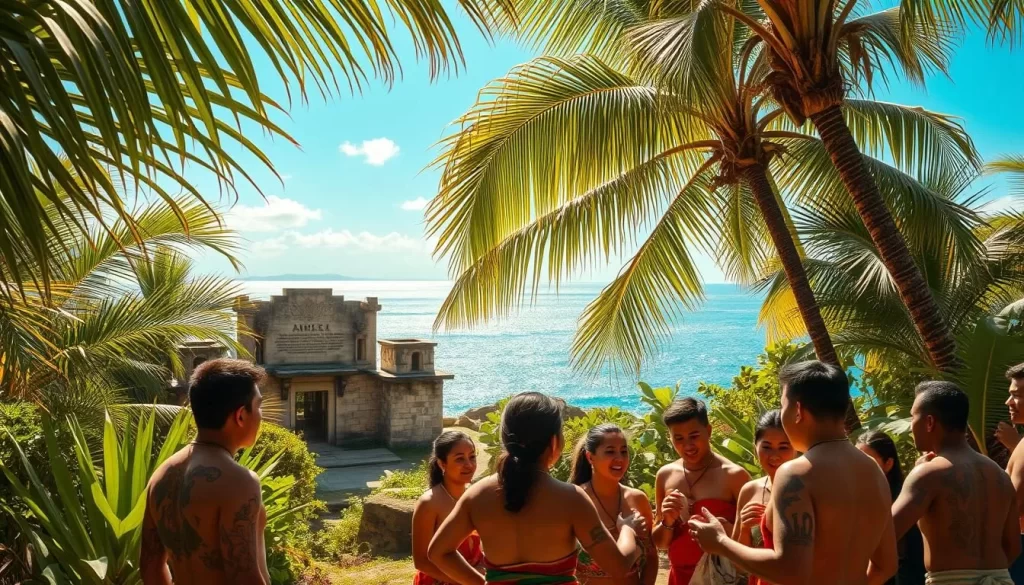
Introduction of English by Missionaries
English was introduced to Tonga by European missionaries in the 19th century. These missionaries played a key role in shaping the linguistic framework of the islands. They brought with them not only religion but also a new word system that would become integral to education and governance.
The impact of English was profound. It became a bridge between Tonga and the wider world, especially in formal settings. Missionaries also translated religious texts, which helped spread literacy and establish English as a part of daily life.
Development of the Tongan Written Form
Before the 19th century, Tongan was primarily an oral language. Early missionaries, including figures like Abel Tasman, transcribed it using Latin-based scripts. This marked the beginning of its written form.
One example of this transformation is the adaptation of proto-Polynesian elements into the modern Tongan script. The written language preserved unique features like the glottal stop, ensuring its distinct identity.
Historical texts and newspapers have been instrumental in preserving this linguistic heritage. They serve as a testament to the efforts of early missionaries and the resilience of the Tongan person.
“Language is the road map of a culture. It tells you where its people come from and where they are going.”
Understanding this historical context is essential for appreciating modern linguistic practices. It highlights the deep connection between language, culture, and identity in Tonga.
Language and Education in Tonga
Education in Tonga reflects a unique blend of tradition and modernity. The nation’s bilingual education policies ensure that students grow up fluent in both Tongan and English. This approach not only preserves cultural heritage but also prepares the younger generation for global opportunities.
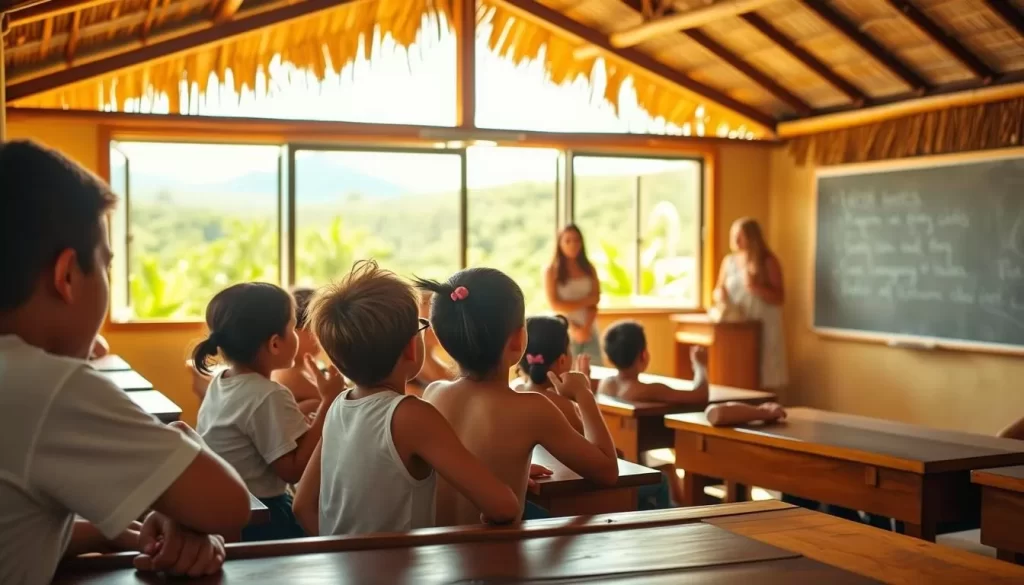
Bilingual Education Policies
Since 2012, Tonga has implemented policies that prioritize Tongan in early education. In kindergarten and primary school, students learn primarily in their native language. This foundation helps them connect with their cultural roots while building confidence in their linguistic abilities.
As students progress to higher grades, English is introduced as a secondary medium of instruction. By high school, the curriculum balances both languages, ensuring students are proficient in both. This model caters to the needs of a diverse population, including those from different ethnic backgrounds.
Classroom Practices from Kindergarten to High School
In early years, classrooms focus on Tongan-only teaching. Teachers use storytelling, songs, and traditional methods to engage young learners. This approach fosters a strong sense of identity and belonging among students.
Starting in class four, English is gradually integrated into the curriculum. Subjects like math and science are taught in English, while Tongan remains the medium for cultural studies. This transition ensures students develop a balanced skill set.
High school classrooms emphasize bilingual fluency. Students are encouraged to switch between languages seamlessly, preparing them for higher education and professional environments. This practice also strengthens group dynamics, as students collaborate across linguistic backgrounds.
These policies and practices highlight the importance of language instruction in shaping national identity. By nurturing bilingualism, Tonga’s education system bridges the gap between tradition and modernity, ensuring a bright future for its youth.
Cultural Significance of Language in Tonga
Language in this Pacific nation is more than just communication—it’s a cornerstone of cultural pride and unity. It shapes how people see themselves and their place in the world. From traditional ceremonies to everyday conversations, language is deeply tied to identity.
Language as a Marker of Identity
The Tongan language, or “lea fakatonga,” is a vital part of national identity. It reflects the nation’s history and values. Over 96% of the population identifies as ethnic Tongans, making the language a unifying force. It’s spoken in homes, schools, and public spaces, reinforcing its role in daily life.
Historical missionaries played a key role in shaping this linguistic heritage. They introduced English and helped develop the written form of Tongan. This dual-language system has become a bridge between tradition and modernity.
Education and Language Identity
Primary education plays a crucial role in preserving the Tongan language. From kindergarten, children learn in their native tongue, fostering a strong sense of identity. As they progress, English is introduced, creating a balanced bilingual system.
This approach prepares students for a globalized world while keeping their cultural roots intact. Schools also teach traditional practices, ensuring the language remains vibrant for future generations.
| Aspect | Role of Language |
|---|---|
| Cultural Identity | Reinforces national pride and unity |
| Education | Balances Tongan and English for global readiness |
| Historical Influence | Shaped by missionaries and evolving systems |
Language policies in Tonga emphasize the importance of maintaining traditions. These policies ensure that the Tongan language remains a source of pride and belonging. For more insights, explore The Tonga Language.
“Language is the soul of a culture, carrying its history, values, and dreams.”
By understanding the cultural significance of language, you gain a deeper appreciation for Tonga’s rich heritage. It’s a testament to the resilience and adaptability of its people.
Influence of Missionaries on Language Formation
The influence of missionaries reshaped the linguistic framework of this Pacific nation. Their work went beyond religion, leaving a lasting mark on communication and education. By translating key texts and promoting literacy, they laid the foundation for modern language practices.
Translation of Religious Texts
Missionaries translated religious texts, such as the Bible, into the local language. This effort made sacred writings accessible to the community, fostering both faith and literacy. These translations became essential tools for instruction, bridging the gap between oral and written traditions.
The process of translation also introduced new vocabulary and concepts. This enriched the language, enabling it to adapt to modern needs. Over time, these texts became a cornerstone of daily communication, used in homes and churches alike.
The Church’s Role in Promoting Literacy
The Church played a central role in spreading literacy. Schools established by missionaries became hubs of learning, where both religious and secular subjects were taught. This dual focus ensured that students gained practical skills alongside spiritual knowledge.
At home, families used translated materials to practice reading and writing. This created a culture of learning that extended beyond the classroom. The Church’s efforts also emphasized the importance of language in preserving cultural identity.
| Aspect | Impact |
|---|---|
| Translation | Made religious texts accessible |
| Literacy | Promoted education and daily use |
| Cultural Identity | Strengthened through language preservation |
These efforts highlight the synergy between religious instruction and language development. For more on this fascinating history, explore the history of Tonga.
“Language is the key to understanding culture, and missionaries unlocked this door for many.”
By understanding the missionaries’ role, you gain insight into how language evolves. Their work remains a testament to the power of communication in shaping societies.
Understanding Tongan Phonology and Grammar
Tongan phonology and grammar offer a fascinating glimpse into the structure of this Polynesian language. Its unique features and intricate rules make it a standout among Austronesian languages. Let’s explore what sets it apart.
Unique Phonological Features
Tongan phonology is marked by distinct characteristics. One key feature is the glottal stop, which can change the meaning of words. For example, “a” and “‘a” have different meanings due to this sound.
The language uses a Latin script, refined in 1943, making it accessible for learners. It includes 14 letters, with the unique consonant “ng” adding to its phonetic richness.
Vowels in Tongan are pronounced in four ways, creating 20 distinct sounds. Stress typically falls on the penultimate syllable, with exceptions for long vowels. This rhythmic pattern gives the language its musical quality.
Grammatical Structures and Registers
Tongan grammar is equally intriguing. It follows a verb-subject-object word order, which is uncommon in many languages. This structure influences how sentences are formed and understood.
The language has three registers: ordinary, honorific, and regal. Each is used in specific contexts, reflecting the speaker’s relationship with the listener. This system highlights the cultural importance of respect and hierarchy.
Pronouns in Tongan are categorized by number and person, with 12 main groups. Possessive pronouns are also divided by definiteness and alienability, adding layers of complexity.
These features underscore the status of Tongan as a vital part of its island nation’s identity. Educational institutions play a key role in preserving and teaching these linguistic traditions. For more on Tongan phonetics, explore this detailed study.
Modern Usage and Media in Tonga
Media in this Pacific nation bridges tradition and modernity, shaping communication across generations. From newspapers to digital platforms, it plays a vital role in preserving language and connecting communities.
Newspapers, Publications, and Digital Media
Traditional publications like Taumu’a Lelei have long been a source of information and cultural pride. These newspapers often focus on local events, education, and public messaging, ensuring the language remains vibrant.
Digital media has added a new layer to this landscape. Online platforms provide support for literacy and make information accessible across the Pacific Ocean. This shift reflects the nation’s adaptability while honoring its roots.
The purpose of these media channels is twofold: to preserve traditional language and to meet modern communication needs. For example, digital tools are now used in schools to enhance learning and keep students engaged.
| Media Type | Role |
|---|---|
| Newspapers | Preserve language and culture |
| Digital Platforms | Enhance literacy and accessibility |
| Educational Tools | Support modern learning methods |
Media in this nation is more than just a source of news. It’s a bridge between generations, ensuring that traditions are passed down while embracing the future. For a deeper dive into this topic, explore the history of media freedom in Tonga.
“Media is the mirror of society, reflecting its values, struggles, and aspirations.”
By understanding the role of media, you gain insight into how this nation balances its rich heritage with modern advancements. It’s a testament to the resilience and adaptability of its people.
Conclusion
Language in this island nation acts as a living tree, deeply rooted in tradition yet branching into modernity. The blend of Tongan and English reflects its rich history and adaptability. From early missionary efforts to today’s bilingual education, the script of this culture continues to evolve.
For students, this dual-language approach prepares them for global opportunities while preserving their heritage. Media and education play key roles in keeping the language vibrant and relevant.
As you reflect on this linguistic journey, consider how language connects past traditions with future innovations. To learn more, explore the fascinating history of The Kingdom of Tonga. Feel free to contact related resources for deeper insights.
The above is subject to change.
Check back often to TRAVEL.COM for the latest travel tips and deals.


